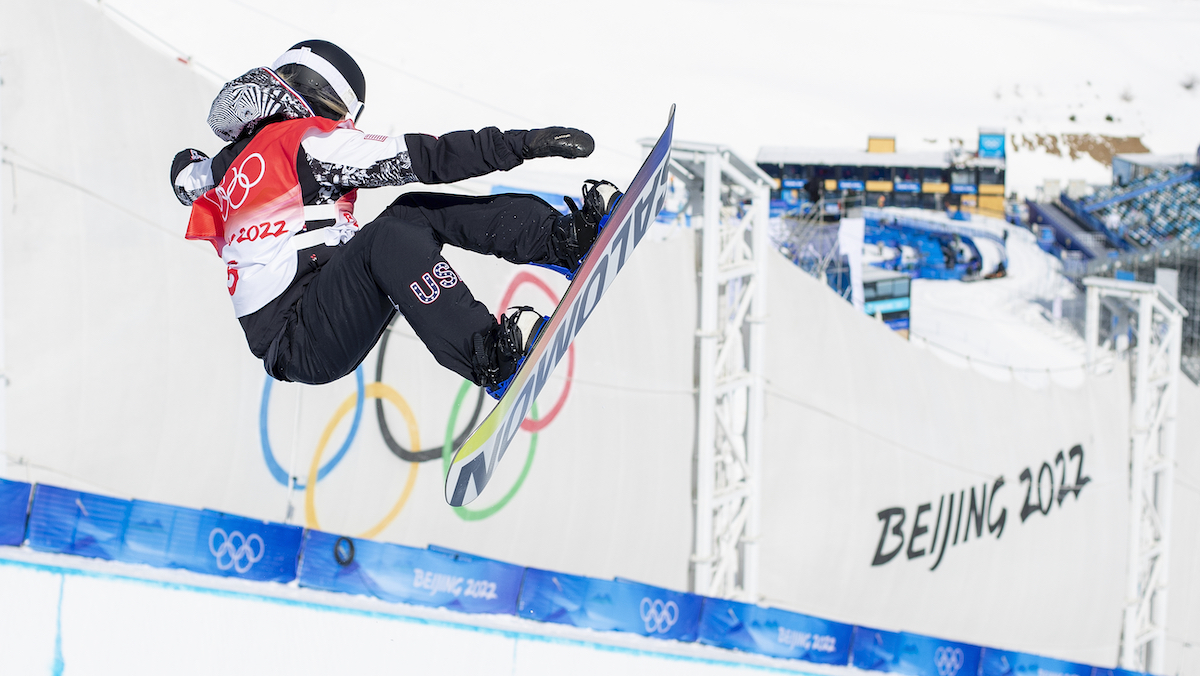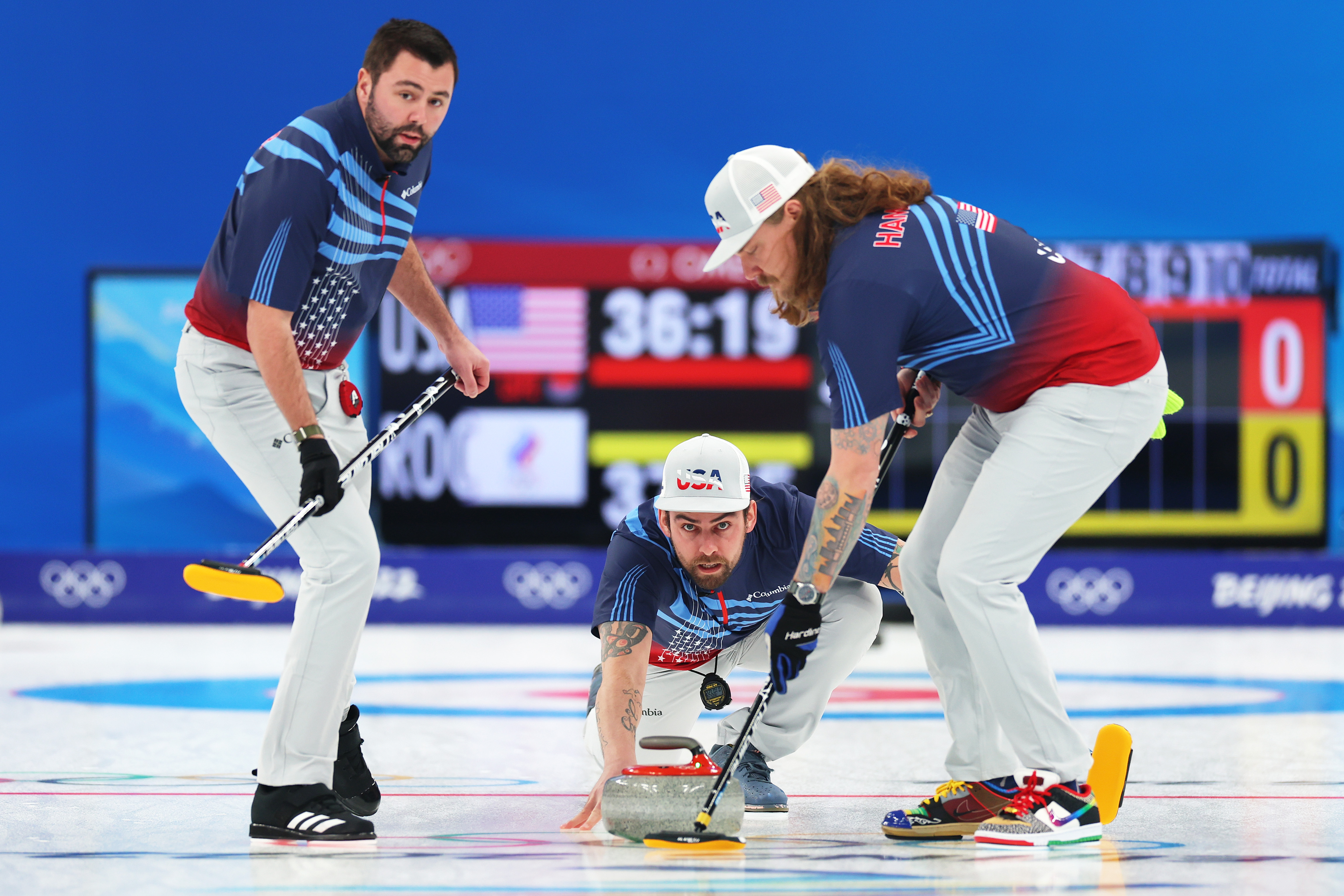Fall away left footer. DNF. 'Kiss and Cry.'
Sometimes picking up sports terminology can feel like learning a foreign language. The jargon was developed out of necessity to communicate complex ideas quickly, according to David Caldwell, a linguist who teaches at the University of South Australia.
WATCH ANYTIME FOR FREE
Stream NBC10 Boston news for free, 24/7, wherever you are. |
Below, we've defined some common words and phrases that may leave you scratching your head as you watch our Olympic coverage on NBC and Peacock.
Booties
Get updates on what's happening in Boston to your inbox. Sign up for our News Headlines newsletter.
The shoes that lugers wear are called booties. In luge, perfect aerodynamics could be the split-second difference between winning a medal or not, so lugers’ footwear is optimized to reduce drag and help athletes get as much speed as possible.
Chicken Salad
This snowboarding move is when a rider grabs the edge of their board between their legs while keeping one leg extended.
Double Cork 1080
A 1080 is when an athlete makes three rotations in the air. A double cork 1080 includes two flips and a twist.
DNF
This is a simple one. DNF means did not finish. It's usually used in sports as an acronym that indicates an athlete didn't finish an event they started.
'Getting Lost'
Getting lost in aerials is when you lose track of where the ground is.
"That's a scary feeling, but I really wouldn't call it dizziness," American freestyle skier Christopher Lillis said. "It's more like I don't know when the ground is going to hit me."
"Getting lost" is similar to the "twisties" in gymnastics.
Hack weight
In curling, hack weight is a shorthand way to refer to the force and momentum required for the stone to travel to the end.
Hammer
No, it's not a weapon or a tool. In curling, a hammer is a name for the last shot of an end, or round. Sometimes, teams that want to control their destiny with that last shot will strategize to gain control of the hammer.
Hat Trick (Hockey)
A hockey hat trick happens when a player scores three goals in a game. When that happens, fans tend to throw a cascade of hats onto the ice, especially if the player is on the home team. A natural hat trick is when a player scores three goals in a row in one game, according to the National Hockey League.
Icing
In hockey, icing is when a team passes or shoots the puck from behind the middle red line, does not touch any players and crosses the opposing goal line.
IOC
The acronym for the International Olympic Committee. The IOC is the authority for everything concerning the Olympic Games. The IOC supervises, supports and monitors the Games and ensures that all of the rules are respected and followed.
Kiss and Cry
The sport of figure skating adopted the term "Kiss and Cry" in the 1980s. It described the area where figure skaters and their coaches await scores to be announced after they perform.
"It's a place where you can celebrate or cry depending on how the program went and depending on how the scores went," American figure skater Nathan Chen told NBCLX.
It is now an official part of the International Skating Union Regulations.
McTwist
This is when a snowboarder rotates at least 540 degrees and does a front flip. The name of this move comes from skateboarder Mike McGill.
Shaun White is credited with crafting the double McTwist for a 720 degree rotation that earned him a gold medal at the Vancouver Olympics in 2010.
Michalchuk
Named after Canadian snowboarder Michael Michalchuk, this move is when a snowboarder does a backflip on the halfpipe’s backside wall.
Moguls
Both a skiing event and a feature of the course. They are bumps or mounds of snow that require serious skill and dexterity to navigate with grace. The term mogul is actually adapted from the German word "Mugel," which means small hill.
Offside (Hockey)
In hockey, offsides happens when a player goes across the blue line into the offensive zone (also called the attacking zone) before the puck does, according to USA Hockey. (The blue line is what divides their offensive zone from the neutral zone.)
Power Play (Hockey)
A power play in hockey is when one team commits a penalty and has to play down a player.
Quad
A quad, or a quadruple, in figure skating is when the skater jumps into the air and spins around at least four times.
ROC
ROC stands for Russian Olympic Committee. It's a group of athletes who aren't allowed to compete under their own flag, but instead under the five-ring Olympic banner.
The reason? In 2017, international officials reached a decision that Russian athletes would compete with the altered name and flag because they had found the country had engaged in a state-sponsored doping program, providing athletes with performance-enhancing drugs.
Russian officials have denied any wrongdoing in connection to the case.
The 2022 Games in Beijing will be the last time Russian athletes will have to compete as ROC, officials said.
Rule 40
Rule 40 was created by the IOC in 1991. The key principles of the rule "set out how the athletes competing at the Olympic Winter Games Beijing 2022 can engage in and benefit from commercial activities around the Olympic Games," according to Olympics.com.
U.S. snowboarder Julia Marino pulled out of the women's big air snowboard competition at the Winter Olympics in Beijing after she said she had been told by the International Olympic Committee that she could no longer use her snowboard made by Prada.
Prior to the big air event, Marino was told the Prada snowboard violated the IOC's "Rule 40," which regulates athletes' personal sponsorships. Read the full story and the IOC's response here.
Ski Out
Skiing out means missing a gate at any point during a ski race. During the Winter Olympics, this means instant elimination from the event, even if it spans multiple runs. Alpine skier Mikaela Shiffrin "skied out" of two races at the 2022 Winter Olympics.
Super-G
In alpine skiing, the super-G stands for super giant slalom, an event that combines the speed of downhill with the more precise turns of giant slalom. There’s less of a vertical drop than the downhill and gates are placed closer together. Each skier makes one run down a single course and the fastest time wins.
Switch Backside Double Cork 1260
“Switch” refers to when a snowboarder is riding backwards and a cork is an off-axis rotation — and if a rider inverts twice, it’s a double cork.
Trimetazidine
Trimetazidine, also known as TMX, was added to the World Anti-Doping Agency (WADA) prohibited list back in 2014. It's typically prescribed to treat angina, which is chest pain caused by reduced blood flow to the heart.
However, it can help athletes, too. "According to knowledge of the pharmacology and mechanism of TMZ action, TMZ can be used by athletes to improve physical efficiency, especially in the case of endurance sports," scientists wrote in a 2014 paper on abuse of the drug by Polish athletes.
Triple Cork
This snowboarding move is when an athlete speeds up on the side of the halfpipe and makes three spins while twisting above the pipe. With moves like this, there’s really no way to correct yourself if something goes wrong, according to Team USA’s Taylor Gold.
“With the tricks that have preceded this one, there’s usually a way of getting out of it if it goes wrong,” Gold said. “With this one, there’s really no way of getting out of it.”
1440
In snowboarding, a number refers to the degrees of rotation in a spin. A 1440 is a combination of flips and sideways twists.




